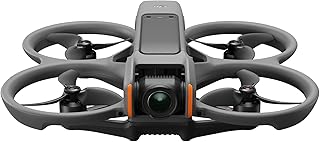DJI Drone Laws and Regulations: Staying Legal
Flying a DJI drone, or any drone for that matter, comes with its own set of rules and regulations. Failing to comply can lead to hefty fines, loss of your drone, and even jail time. This guide aims to give you a basic understanding of the key regulations, but it is crucial to consult official sources for the most up-to-date and accurate information.
1. FAA Registration:
* In the United States: All drones weighing over 0.55 pounds (250 grams) must be registered with the FAA. This applies even for recreational use. You can register online at the FAA website.
* Other countries: Check your country's specific regulations for registration requirements.
2. Remote Pilot Certificate:
* In the United States: If you are flying your drone for commercial purposes (earning money), you need a Remote Pilot Certificate. This requires passing an FAA exam and completing an online training course.
* Other countries: Check your country's specific regulations for commercial drone operation licensing.
3. Know Your Drone's Capabilities and Limits:
* Operating Altitude: Be aware of the maximum legal altitude for your drone. The FAA requires drones to stay below 400 feet above ground level (AGL).
* No Fly Zones: The FAA has designated numerous no-fly zones for drones. This includes areas around airports, government buildings, and other sensitive locations. You can use the FAA's B4UFLY app to check for no-fly zones in your area.
* Weather Conditions: Avoid flying in bad weather. Wind, rain, snow, and fog can make it difficult to control your drone and can lead to accidents.
4. Drone Flight Regulations:
* Line of Sight: You must maintain visual line of sight with your drone at all times. This means you cannot fly it beyond your direct vision.
* Privacy Concerns: Be aware of privacy regulations. You cannot use your drone to spy on people or record footage without their consent.
* Wildlife: Don't fly near wildlife, especially endangered species. Drones can disturb animals and their habitats.
5. Local Regulations:
* City and County Laws: Many cities and counties have their own rules and regulations regarding drones. You may need to obtain permits or licenses before flying.
* National Parks and Other Protected Areas: Some national parks and other protected areas may prohibit drone flights. Check with the specific park or area before flying.
6. Safety First:
* Avoid Flying Over People: Always fly your drone in a safe and responsible manner.
* Stay Away from Crowds: Don't fly your drone over crowds of people.
* Be Aware of Your Surroundings: Always be aware of your surroundings and avoid flying near power lines, tall structures, or other potential hazards.
Important Tips:
* Always read the owner's manual for your drone.
* Stay informed about the latest drone laws and regulations.
* Use common sense and be respectful of others.
Resources:
* Federal Aviation Administration (FAA): [https://www.faa.gov/](https://www.faa.gov/)
* B4UFLY App: [https://www.faa.gov/uas/b4ufly/](https://www.faa.gov/uas/b4ufly/)
By following these guidelines, you can ensure you're flying your DJI drone legally and safely, and enjoying the benefits of this exciting technology.


